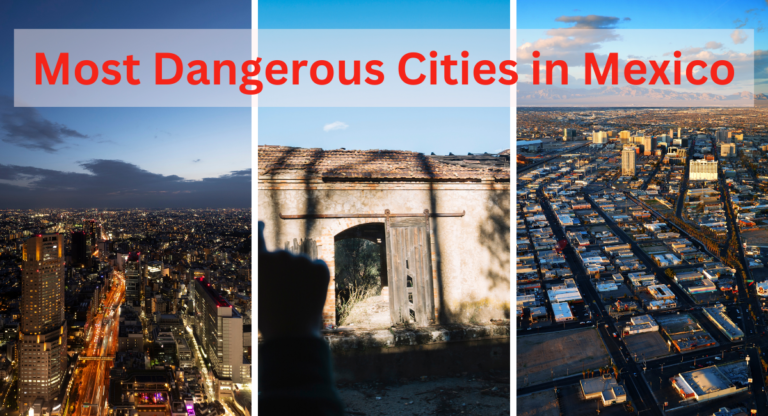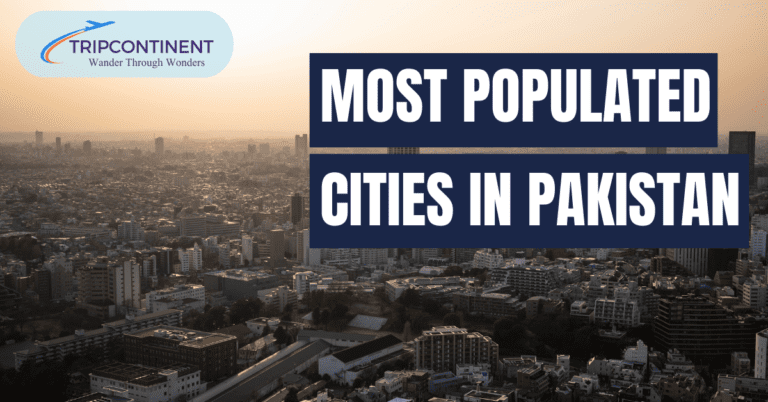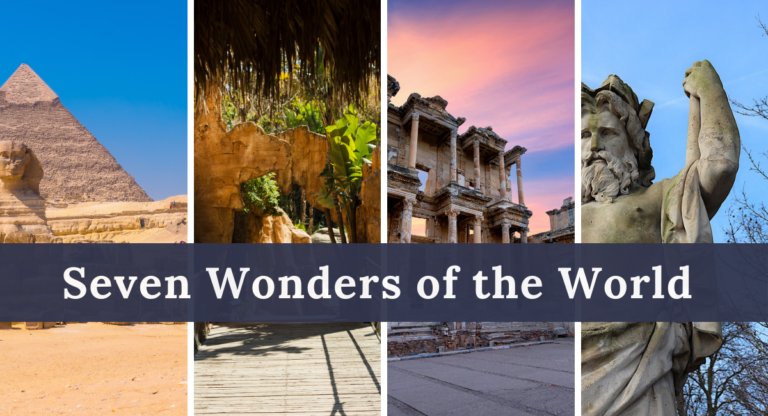The 8 Worst Prisons in the World in 2024
Have you ever wondered about the origins of the world’s prison systems and how they have evolved? The practice of imprisonment as punishment traces back centuries, originating in the 17th century when individuals, including orphans, were detained for various reasons or while awaiting trial. However, these early “prisons” bore little resemblance to the modern penitentiaries we know today, serving more as holding facilities similar to jails rather than centers for punitive measures.
The landscape of incarceration began to shift following the American Revolution, with the establishment of three of the world’s first state prisons in the United States: Massachusetts in 1785, Connecticut in 1790, and Pennsylvania in 1794. At the time, rampant violence, corruption, and disease plagued the existing jail system, prompting calls for reform. This era marked a pivotal moment, laying the groundwork for the development of prisons as we recognize them today.
Contemporary prisons vary significantly in size and living conditions, often tailored to the profiles of the individuals they house. While minimum-security facilities in the United States and abroad may have comfortable amenities and access to rehabilitation programs, the stark reality contrasts sharply with many others. Across the globe, overcrowded prisons with inadequate medical care and heightened risks of violence paint a distressing picture.
In this guide, we will dive into the darkest corners of the prison system, shedding light on eight of the worst prisons in the world. From the glaring disparities in living conditions to the systemic challenges facing both inmates and staff, this list offers a glimpse into the stark realities of imprisonment today.
A List of the Worst Prisons in the World
The list below highlights the 8 worst prisons in the world in no particular order.
- Black Dolphin Prison, Russia
- Kamiti Maximum Security Prison, Kenya
- Terre Haute, U.S.A.
- San Quentin State Prison, U.S.A.
- Diyarbakir Prison, Turkey
- Mendoza Prison, Argentina
- Gldani Prison, Georgia
- United States Penitentiary, Administrative Maximum Facility (ADX), USA
1. Black Dolphin Prison, Russia
Black Dolphin Prison, situated near Russia’s border with Kazakhstan, stands as one of the most infamous correctional facilities globally, known for housing the most dangerous and violent criminals within Russia’s penal system. Operating under the designation of penal colony No. 6, it specifically caters to inmates convicted of heinous crimes, ranging from serial killings to acts of terrorism.
Named after a prominent dolphin sculpture crafted by inmates, the prison holds a notorious reputation for its stringent security measures. Inmates deemed high-risk are subjected to round-the-clock surveillance via video monitoring, with guards conducting regular patrols every 15 minutes. The cells, measuring a mere 50 square feet (4.6 square meters), house two prisoners and are fortified by three sets of steel doors, ensuring maximum isolation from both guards and fellow inmates.
Prisoners at Black Dolphin are granted a scant 90 minutes of outdoor recreation per day, confined to barren concrete yards devoid of any amenities. However, any movement within the facility entails stringent protocols designed to prevent interaction between inmates and minimize the risk of escape. Inmates are shackled, blindfolded, and forced to walk in a bent-over position, effectively preventing them from familiarizing themselves with the prison’s layout or engaging with fellow detainees.
This practice, unique to Black Dolphin, underscores the institution’s commitment to maintaining strict control over its inmate population. While controversial, these measures serve as a testament to the prison’s dedication to security and order, reflecting the severity of the crimes committed by its inhabitants.
2. Kamiti Maximum Security Prison, Kenya
Kamiti Maximum Security Prison, located in Roysambu Constituency, Kenya, is widely regarded as one of the most severe correctional facilities in the country, famous for its harsh conditions. Constructed in 1954 by the British, Kamiti was modeled after the colonial prison system to house offenders during the state of emergency declared in October 1952. Despite its historical significance, the prison remains infamous for its brutal living conditions and systemic issues.
Kamiti’s capacity is officially set at 1,200 inmates; however, reports suggest that the actual population ranges between 1,800 and 2,500, resulting in severe overcrowding. This excessive inmate population exacerbates the already dire conditions, leading to significant health concerns. The prison’s unsanitary environment fosters the spread of various diseases, including HIV/AIDS, gonorrhea, syphilis, tuberculosis, and dysentery, posing serious health risks to inmates and staff.
The prison retains its original gallows, though the last execution took place in 1987, marking the end of capital punishment at Kamiti. Despite this, the facility continues to be associated with severe punishment and repression. Historically, Kamiti has housed political prisoners, and its reputation was further cemented in 2008 when a riot, sparked by a contraband search, was captured on a cellphone and broadcast on television. This incident highlighted the prison’s harsh realities and brought international attention to its conditions.
Kamiti’s notoriety was reignited in 2021 following the escape of three convicted terrorists, an event that resulted in the arrest of seven wardens accused of facilitating the escape. This incident underscored the ongoing challenges within the prison system, including corruption and security lapses.
Overall, Kamiti Maximum Security Prison stands as a stark symbol of Kenya’s penal system’s struggles, characterized by overcrowding, unsanitary conditions, and recurring security issues. Despite these challenges, Kamiti continues to operate, serving as a reminder of the urgent need for prison reform and improved conditions for inmates.
3. Terre Haute, U.S.A.
Terre Haute Federal Correctional Complex, located in Indiana, is a multi-faceted prison facility comprising maximum-security, medium-security, and low-security units. Known colloquially as “Guantanamo North,” it houses some of the most dangerous inmates in the United States, including Dzhokhar Tsarnaev, the Boston Marathon bomber, who is currently on death row.
The United States federal government’s execution chamber is located at Terre Haute, making it the focal point for federal capital punishment. In 2008, the American Civil Liberties Union (ACLU) criticized the prison for its “grossly inadequate” conditions within its special confinement unit, where death row inmates are held. The ACLU reported that prisoners were denied proper medical and mental health care and were subjected to constant noise levels leading to sleep deprivation, highlighting severe human rights concerns.
In January 2021, Terre Haute recorded the highest number of COVID-19 cases within the federal prison system, including infections among death row inmates. The prison’s handling of the pandemic further increased concerns about inmate welfare and the adequacy of health measures in place.
Federal executions at Terre Haute have been temporarily halted since July 1, 2021, following an announcement by U.S. Attorney General Merrick Garland that the Department of Justice would review its capital punishment policies. This pause came after the Trump administration conducted 13 federal executions in the final months of Trump’s term, including the execution of Lisa Montgomery on January 12, 2021. Lisa Montgomery became the first woman to be executed by the United States government in 67 years.
Despite the suspension of federal executions, 46 men remain on death row at Terre Haute, including Dylann Roof, who was sentenced to death for the racially motivated murders of nine churchgoers in Charleston, South Carolina, in 2015. Terre Haute continues to be a significant site within the federal prison system, reflecting broader issues of capital punishment, prison conditions, and inmate rights.
4. San Quentin State Prison, U.S.A.
San Quentin State Prison, established in 1852, is the oldest prison in California and one of the most infamous correctional facilities in the United States. Located in Marin County, it has been home to some of the country’s most famed criminals, including Charles Manson, Scott Peterson, and Sirhan Sirhan, who assassinated Robert F. Kennedy.
San Quentin has a long history of violence and corruption. Particularly in the 1960s and 1970s, the prison was notorious for its severe interracial riots, often incited by the guards themselves. This period was marked by significant unrest and brutality within its walls, contributing to its fearsome reputation.
For many years, San Quentin housed the only death row facility in California, making it the largest such facility in the United States, with over 700 death row inmates. It also contained California’s only gas chamber. However, in early 2022, the state began the process of closing the death row and relocating its inmates. This decision came three years after California Governor Gavin Newsom declared a moratorium on executions in the state, reflecting a significant shift in the state’s approach to capital punishment.
San Quentin has been a focal point for discussions about prison reform, inmate rights, and the ethics of capital punishment. Despite its grim history, it has also been the site of numerous rehabilitation programs aimed at reducing recidivism and helping inmates reintegrate into society. These programs have included educational opportunities, vocational training, and initiatives like the San Quentin News, a newspaper produced by inmates.
While San Quentin’s legacy is deeply intertwined with its history of violence and corruption, ongoing reforms and changes in policy aim to reshape its future. The closure of death row marks a pivotal moment in the prison’s history, signaling a move towards a different era in California’s penal system.
5. Diyarbakir Prison, Turkey
Diyarbakir Prison, built in 1980 by Turkey’s Ministry of Justice, stands as a grim symbol of the country’s harsh punitive measures, particularly following the Turkish coup d’état on September 12, 1980. After the coup, Diyarbakir became a military prison under martial law, famous for its brutal treatment of detainees, particularly those of Kurdish descent. The post-coup crackdown saw 650,000 people detained, many of whom were subjected to severe beatings and torture. Among these, over 500 individuals died, with a significant number of deaths occurring within the walls of Diyarbakir.
The early and mid-1980s, referred to as “the period of barbarity,” marked the prison’s darkest era. During this time, prisoners endured systematic and horrific acts of torture aimed at forced assimilation of the Kurdish population. Former inmates have provided harrowing testimonies of the abuse they suffered, including physical and mental torture, deprivation of sleep, sensory experiences, water, and food. Methods of torture included “Palestinian hangings” (suspension by the arms), mock executions, electric shocks to the genitals, extraction of nails and teeth, and sexual assault or threats thereof.
These severe human rights violations fueled resentment and resistance, significantly contributing to the rise of the Kurdistan Workers’ Party (PKK), which continues to fight against the Turkish state. Despite the prison’s notorious history, Diyarbakir remains operational and is still known for its significant number of human rights violations per inmate.
In 2021, Turkish President Recep Tayyip Erdoğan announced plans to convert Diyarbakir Prison into a cultural center, a decision met with mixed reactions. Some view it as a step towards acknowledging and redressing past abuses, while others see it as an attempt to erase a dark chapter of history without full accountability. The transformation of Diyarbakir Prison into a cultural center represents a complex and controversial shift, reflecting broader tensions within Turkish society regarding its treatment of the Kurdish population and its history of political repression.
6. Mendoza Prison, Argentina
Mendoza Prison in Argentina is well-known for its severe overcrowding and inhumane conditions. Designed to hold far fewer inmates, the facility houses a population roughly three times its capacity. Cells measuring only 43 square feet (4 square meters) often contain as many as five inmates, forcing many to sleep on the floor without mattresses. These harsh living conditions highlight the severe overcrowding crisis within the Argentine penal system.
In 2005, Amnesty International reported on the dire state of Mendoza Prison, revealing the extreme measures inmates took to protest their conditions. Some prisoners went as far as sewing their mouths shut to demand better living conditions. The report highlighted widespread torture and even deaths among inmates, emphasizing the urgent need for reform.
Medical care at Mendoza Prison is grossly inadequate, increasing the suffering of the inmates. Many prisoners lack access to basic healthcare services, leading to untreated illnesses and injuries. The prison also suffers from a lack of proper sanitation facilities. With no functioning sewage system, inmates are forced to use plastic bags and bottles as makeshift toilets, further degrading their living conditions.
These appalling conditions have drawn international condemnation and underscored the need for significant reforms within Argentina’s prison system. The ongoing issues at Mendoza Prison serve as a stark reminder of the urgent need for improved prison management, increased capacity, and better living standards to ensure the humane treatment of inmates. Addressing these challenges is crucial to upholding the rights and dignity of those incarcerated and preventing further human rights violations.
7. Gldani Prison, Georgia
Gldani Prison, located in Tbilisi, Georgia, became infamous in 2012 when a scandal exposed severe prisoner abuses by the guards. The abuses, including rape and assault, were revealed through videos filmed by a former corrections officer who turned whistleblower. This footage sparked widespread outrage and major protests across Georgia, leading to significant reforms in the treatment of inmates. The scandal highlighted the extent of torture and abuse within the Georgian prison system, prompting both national and international demands for change.
In the aftermath of the scandal, the Georgian government implemented reforms aimed at improving prison conditions. These changes included measures to enhance transparency, accountability, and the overall treatment of inmates. Over the past decade, conditions in the country’s prisons have improved significantly, with efforts to ensure that such abuses do not recur.
Despite these improvements, Gldani Prison has once again come under scrutiny due to the imprisonment of former Georgian President Mikheil Saakashvili. His detention has sparked protests, drawing attention to the prison’s troubled history and its reputation for mistreatment. The protests have been divided, with some groups advocating for Saakashvili’s release while others support his continued detention. This renewed focus on Gldani Prison underscores ongoing concerns about the facility and the broader issues within Georgia’s penal system.
The Gldani Prison scandal and its aftermath highlight the critical need for ongoing vigilance and reform to protect the rights and dignity of inmates, ensuring that past abuses are not repeated and that the prison system operates in a humane and just manner.
8. United States Penitentiary, Administrative Maximum Facility (ADX), USA
The United States Penitentiary, Administrative Maximum Facility (ADX), also known as ADX Florence, Florence ADX, Supermax, or the Alcatraz of the Rockies, is the most maximum-security prison in the United States. Built in 1994, ADX Florence is located in Colorado and is designed to house some of the world’s most dangerous criminals. Notable inmates include Ted Kaczynski (the Unabomber), Ramzi Yousef (responsible for the 1993 World Trade Center bombing), and Zacarias Moussaoui (involved in the 9/11 attacks).
ADX Florence is known for its extreme security measures and harsh living conditions. Inmates spend 23 hours a day in solitary confinement within their 7-by-12-foot (2-by-3.6-meter) concrete cells. These cells have tiny windows that allow minimal natural light, and meals are delivered through small slots in the metal doors. This design ensures minimal human contact and interaction, intensifying the isolation experienced by the inmates.
During the one-hour daily recreation period, prisoners are escorted with multiple restraints and guarded closely as they move to a small outdoor cage. This strict protocol minimizes the risk of escape and maintains high security within the facility. Former warden Robert Hood once described ADX Florence as “a clean version of hell,” highlighting the severe conditions inmates endure.
The purpose of ADX Florence is to contain the most dangerous and disruptive prisoners, ensuring they pose no threat to society or other inmates. Despite its controversial methods, the prison plays a critical role in the U.S. penal system by managing individuals deemed too dangerous for conventional incarceration. The extreme isolation and stringent security measures at ADX Florence continue to spark debates on human rights and the ethical treatment of prisoners.
Final Words
Examining some of the worst prisons in the world reveals that inmates’ conditions and treatment can vary drastically, often reflecting broader societal and governmental attitudes toward crime and punishment. The history and current state of these prisons highlight the ongoing challenges in balancing security with humane treatment.
These examples underscore the importance of continued advocacy for prison reform and the protection of human rights within the penal system. Addressing issues such as overcrowding, inadequate medical care, and the use of torture is crucial for ensuring that prisons fulfill their intended purpose: to rehabilitate and reintegrate individuals into society rather than merely punish and degrade them.
As we move forward, it is essential to remember the humanity of those incarcerated and to strive for a system that upholds justice, dignity, and respect for all individuals, regardless of their crimes.
FAQs
Where Is the Safest Jail in the World?
ADX Florence, also known as ADMAX Florence, Florence ADMAX, Supermax, or the Alcatraz of the Rockies, is considered the safest and most secure prison in the world. This administrative maximum-security jail is located in Fremont County, near Florence, Colorado, and is designed to house the most dangerous and high-profile criminals, ensuring maximum security and isolation.
Which Country Leads the World in Incarceration Rates?
El Salvador has the highest incarceration rate globally, along with the highest murder rate, with over 50 homicides per 100,000 inhabitants in 2023. This small Central American nation faces significant challenges with crime and violence, contributing to its high prison population.
What Is the Most Famous Prison Globally?
Alcatraz, located in San Francisco Bay, gained worldwide notoriety as the toughest prison in America. Renowned for its harsh conditions and high-security measures, it was often considered the most fearsome prison of its time, earning a place in popular culture and history books alike.
Which Prison Boasts the Utmost Luxury Globally?
Situated on Bastoy Island in Oslofjord, Bastoy Prison, Norway accommodates approximately 100 inmates who revel in amenities like tennis, horseback riding, fishing, and sunbathing within the compound. Moreover, the prison provides cottages for inmate housing, surrounded by lush farms for agricultural work.

I’m Sophia Jones, an adventurer at heart from New York City, USA. I live for travel and exploration, always eager to discover new places, meet fascinating people, and try out diverse cuisines. Over the past few years, I’ve traveled to numerous countries, immersing myself in different cultures and creating unforgettable memories.






